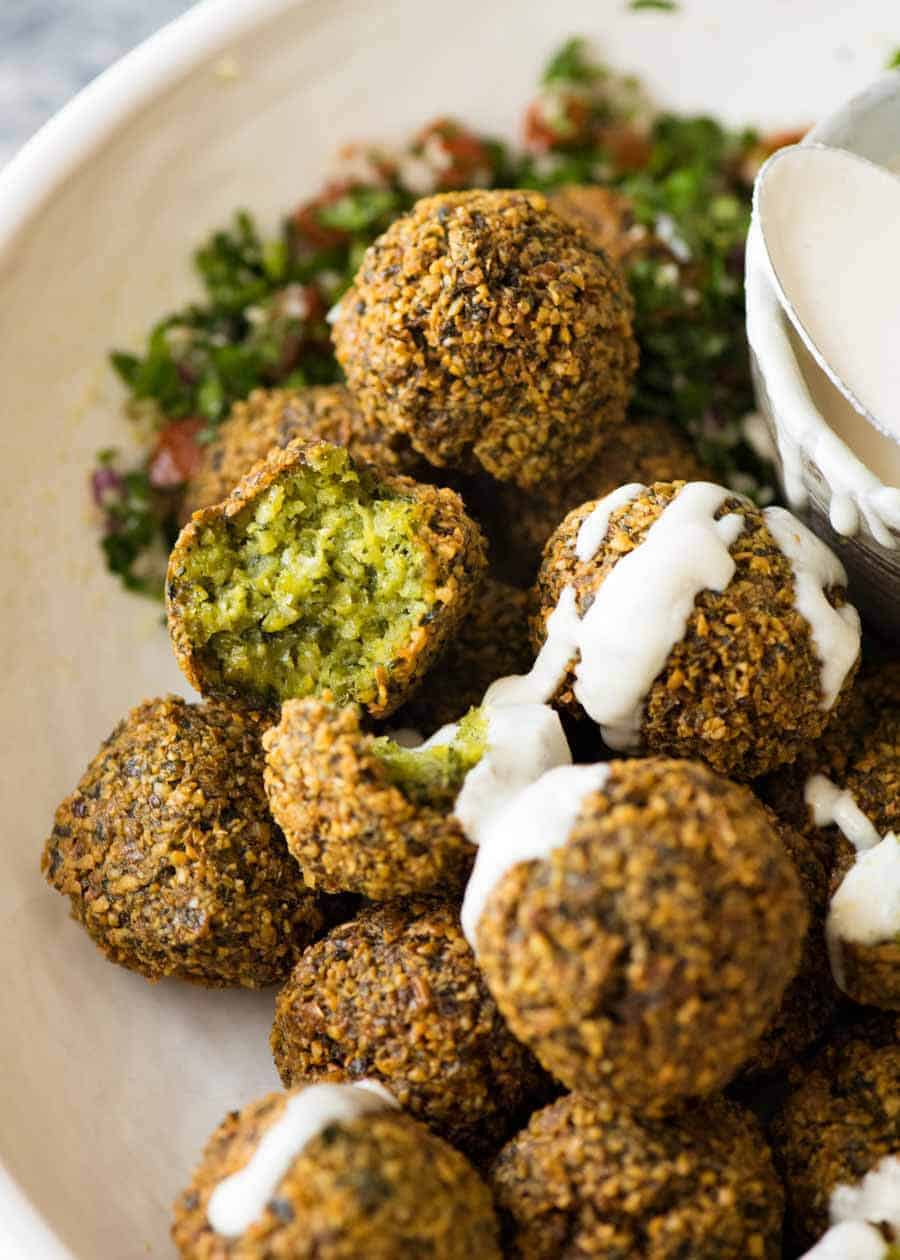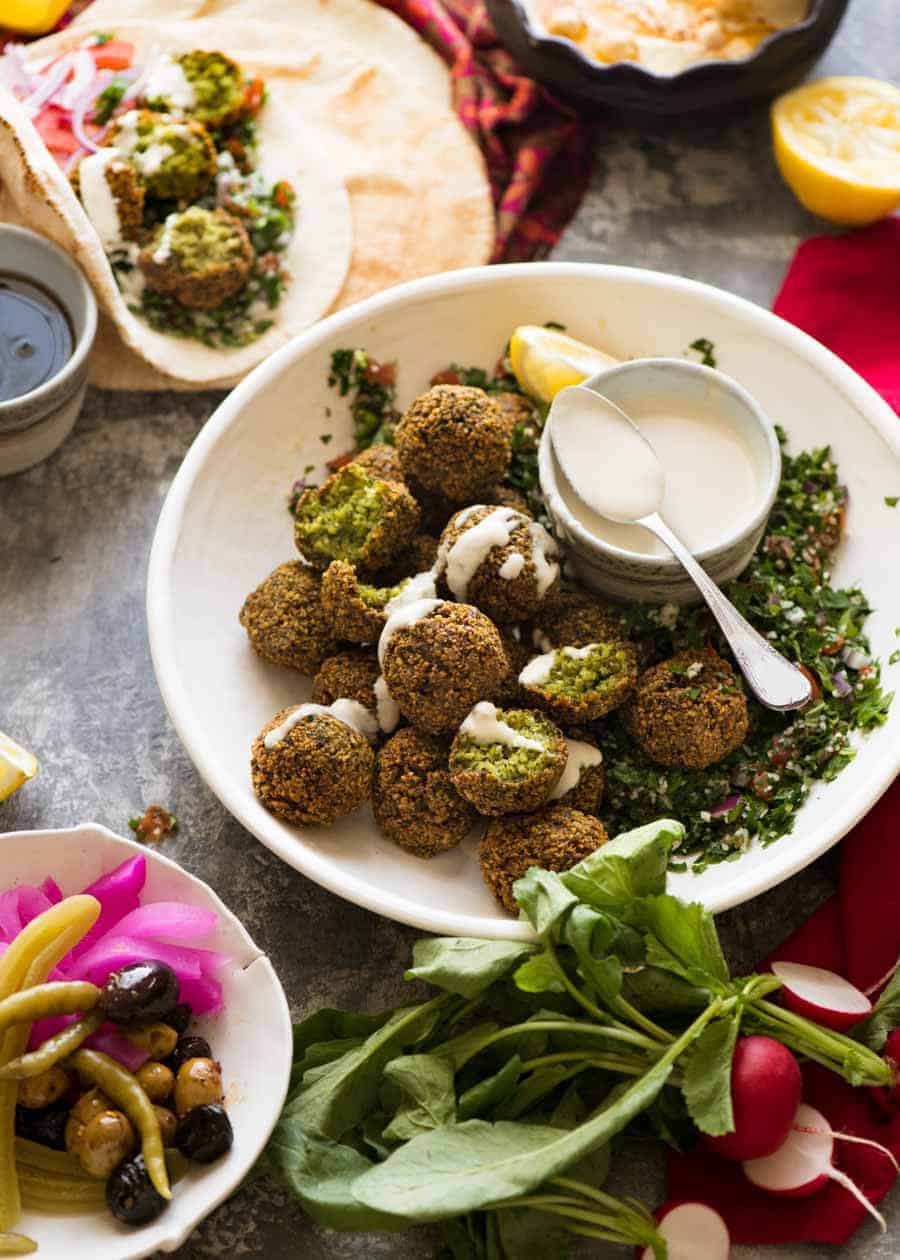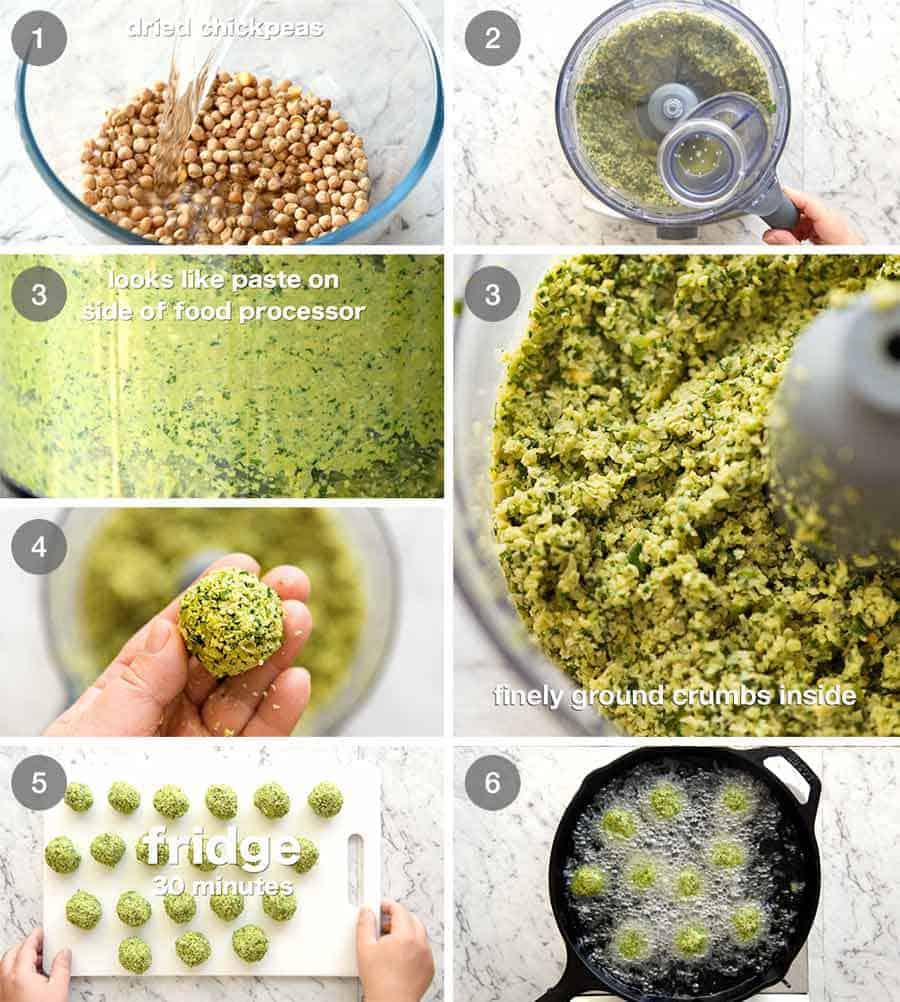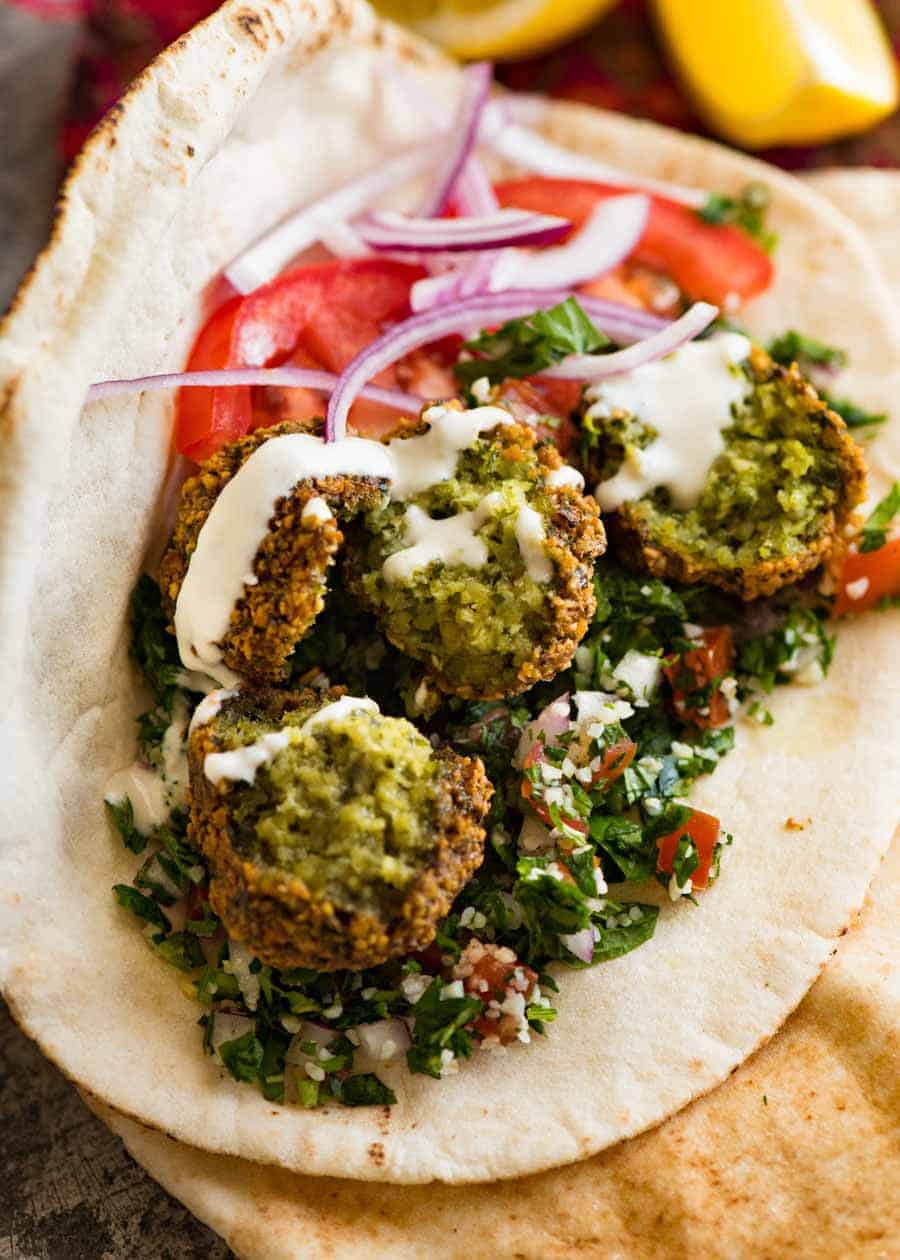The best part is breaking open the golden brown balls to reveal the dazzling green insides. Dip them in tahini sauce and pop them straight in your mouth, or make wraps!
Falafel recipe
There are many things I do not know, but I do know this: Falafels are the highest and best use of chickpeas. Perhaps not the most common use – hard to beat a batch of creamy hummus whipped up in mere minutes using a can of chickpeas. But if you’re after the best use of chickpeas, falafels win every time. And if you’re a falafel fiend like me, you’re going to be blown away how easy it is to make falafels at home!
This falafel recipe takes me back to my travels through the Middle East, where I enjoyed freshly made falafels almost every day!
Canned chickpeas don’t work!
In the falafel world, canned chickpeas are not only illegal, they flat out don’t work. Reason: falafels are made with dried chickpeas that are soaked but not cooked before forming the falafel balls. Other than the dried chickpeas rule, there’s nothing unusual that goes into falafels. Baking powder is the only point of contention – you won’t see it in all recipes and it’s not endorsed by Kenji over at Serious Eats, one of our references for this recipe. But it’s a trade secret we managed to extract from Hijazi’s Falafel in Earlwood, one the best falafel joints in Sydney. So we tried it with and without, side by side, and the baking powder version was noticeably more fluffy – and moist. So it’s in. Fluffy insides to the max!!!
Falafels MUST be made with soaked dried chickpeas that are NOT cooked. Canned chickpeas don’t work!
Frying is not optional!
It’s rare that I say frying is mandatory, but for falafels, it is. It’s the only way to get the signature super crispy dark crust and keep the inside moist. For this falafel recipe, I deep-deep fry them in the video, using enough oil so they’re mostly submerged. But you don’t need to – you can use far less oil than I did and they can be shaped like discs rather than balls which will mean even less oil required for frying. Speaking of discs – you can unleash your wild side when it comes to shaping falafels. I chose balls because for me, that’s the shape that first comes to mind. But other common shapes include: disc shape (slightly flattened ball), dome (ball with underside flattened) and torpedoes (evil looking shape, like a football).
How to make falafels
I promise you this falafel recipe is straightforward, and I did not exaggerate! Here’s how to make falafels:
Soak dried chickpeas overnight (seriously, remembering to do this is the hardest part!) Blitz with herbs, spices, garlic, flour and a touch of water Form balls, refrigerate to firm up Fry until deep golden brown and super crispy Devour as fast as humanly possible. Falafels are at their absolute peak straight out of the fryer!
How to serve Falafels
The thought of having a whole bowl of freshly cooked falafels to dunk into sauce and pop straight into my mouth is certainly appealing – though not the most nutritious meal option!! So to serve Falafels as a meal, I like to either make falafel plates or wraps using pita bread, or falafel rolls using Lebanese or other large flatbreads (like the Falafel rolls sold at Kebab shops in Australia). In all 3 of these options, I use: tabbouleh and/or shredded iceberg lettuce, tomato and onion slices and drizzle the Falafels with Tahini Sauce. Hummus also makes an appearance 99% of the time – a very big dollop of it! Falafels also make a terrific gluten free meal by making falafel plates using a flavoured rice instead of bread – such as Mejadra (Middle Eastern Lentil Rice).
Falafel sauce options
A sauce is a must for falafels – you need the wetness. Tahini Sauce is the standard, but it’s also terrific with a simple yoghurt-lemon sauce or even a thinned down hummus. Recipes for all these options are in the recipe below.
Making ahead
Falafels are one of those foods that are truly at their best fresh out of the fryer, when they’re super crispy on the outside and the inside is piping hot and moist. Once refrigerated, the crust softens and the inside loses moisture. But! The good news is that they can be resurrected to a near freshly-cooked state using a combination of a microwave (gets the insides moist again) and a hot oven to recrisp the surface. They’re good for 5 days in the fridge – probably longer. Imagine that! Getting your falafel fix day after day after day….. – Nagi x PS Couple more things homemade falafels has going for them: they’re super economical compared to store bought (dried chickpeas are the main ingredient and they’re super cheap!) and you can control the saltiness – I find that even the best falafel stores are often too salty.
Falafel recipe
Watch how to make it
LIFE OF DOZER
He really thought there was something tasty buried in that prickly bush – he was snuffling around in there for ages!!






